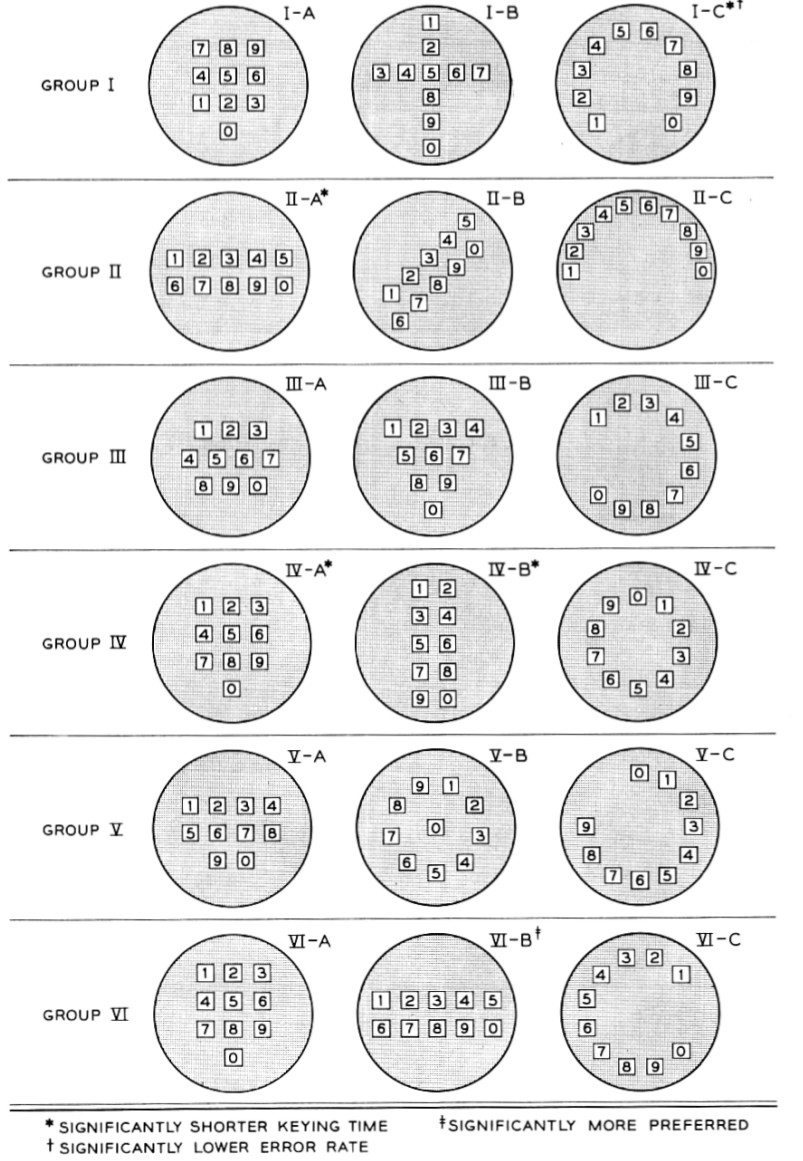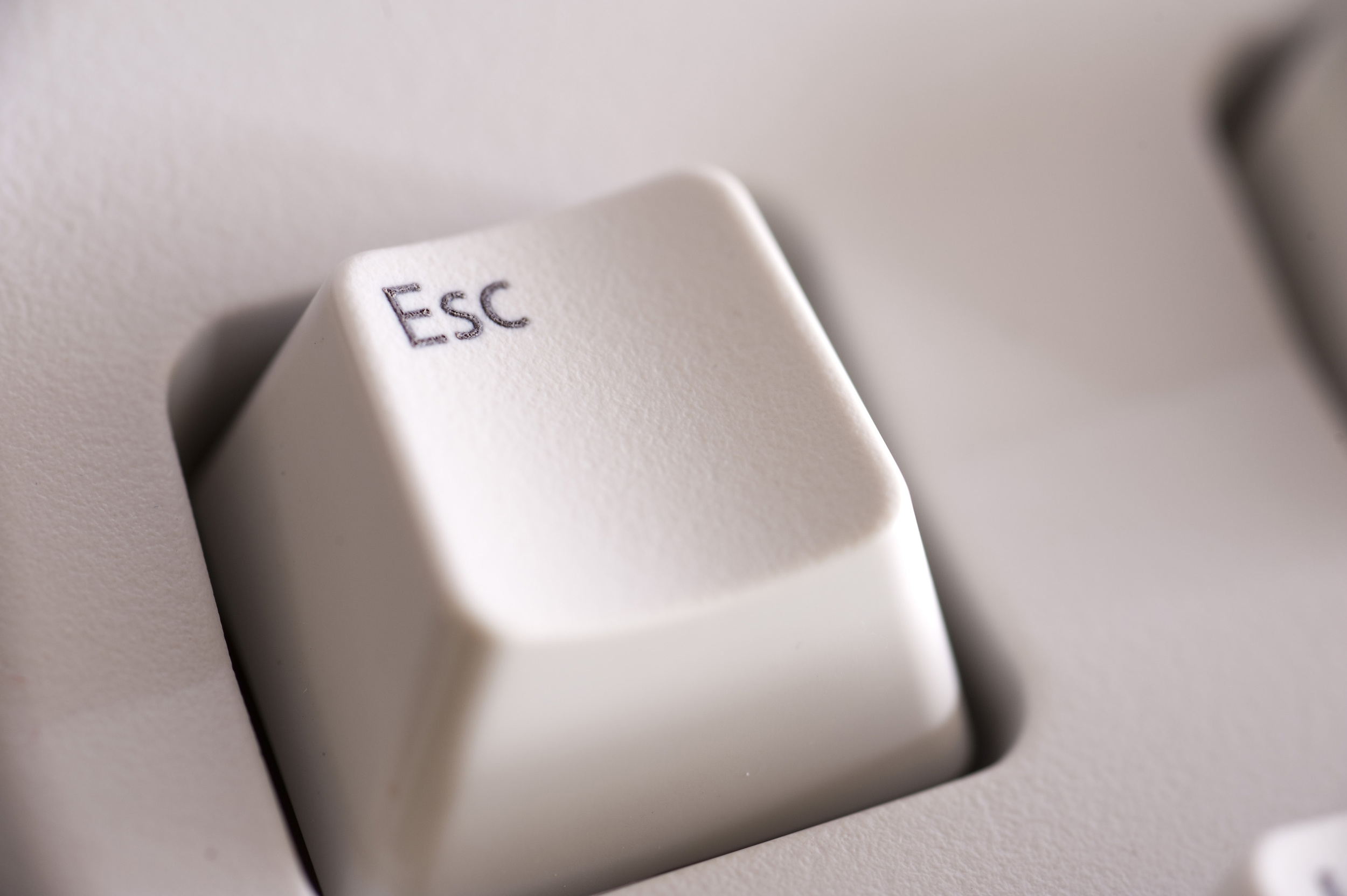 Always interesting to see other versions of things now ubiquitous. Such as this great Gizmodo post on The Atlantic:
Always interesting to see other versions of things now ubiquitous. Such as this great Gizmodo post on The Atlantic:
If you look at the layout of the number buttons on a phone -- smart, cell, landline, what have you -- the number buttons will feature, almost inevitably, a uniform layout. Ten digits, laid out on a three-by-three grid, with the tenth tacked on on the bottom. The numbers ascending from left to right, and from top to bottom.
This layout is so standardized that we barely think about it. But it was, in the 1950s, the result of a good deal of strategizing and testing on the part of people at Bell Labs. Numberphile has dug up an amazing paper -- published in the July 1960 issue of "The Bell System Technical Journal" -- that details the various alternative designs the Bell engineers considered. Among them: "the staircase" (II-B in the image above), "the ten-pin" (III-B, reminiscent of bowling-pin configurations), "the rainbow" (II-C), and various other versions that mimicked the circular logic of the existing dialing technology: the rotary.
Everything was on the table for the layout of the ten buttons; the researchers' only objective was to find the configuration that would be as user-friendly, and efficient, as possible. So they ran tests. They experimented. They sought input. They briefly considered a layout that mimicked a cross.
And in the end, though, Numberphile's Sarah Wiseman notes, it became a run-off between the traditional calculator layout and the telephone layout we know today. And the victory was a matter of efficiency. "They did compare the telephone layout and the calculator layout," she says, "and they found the calculator layout was slower."
Via Paleofuture/Gizmodo


